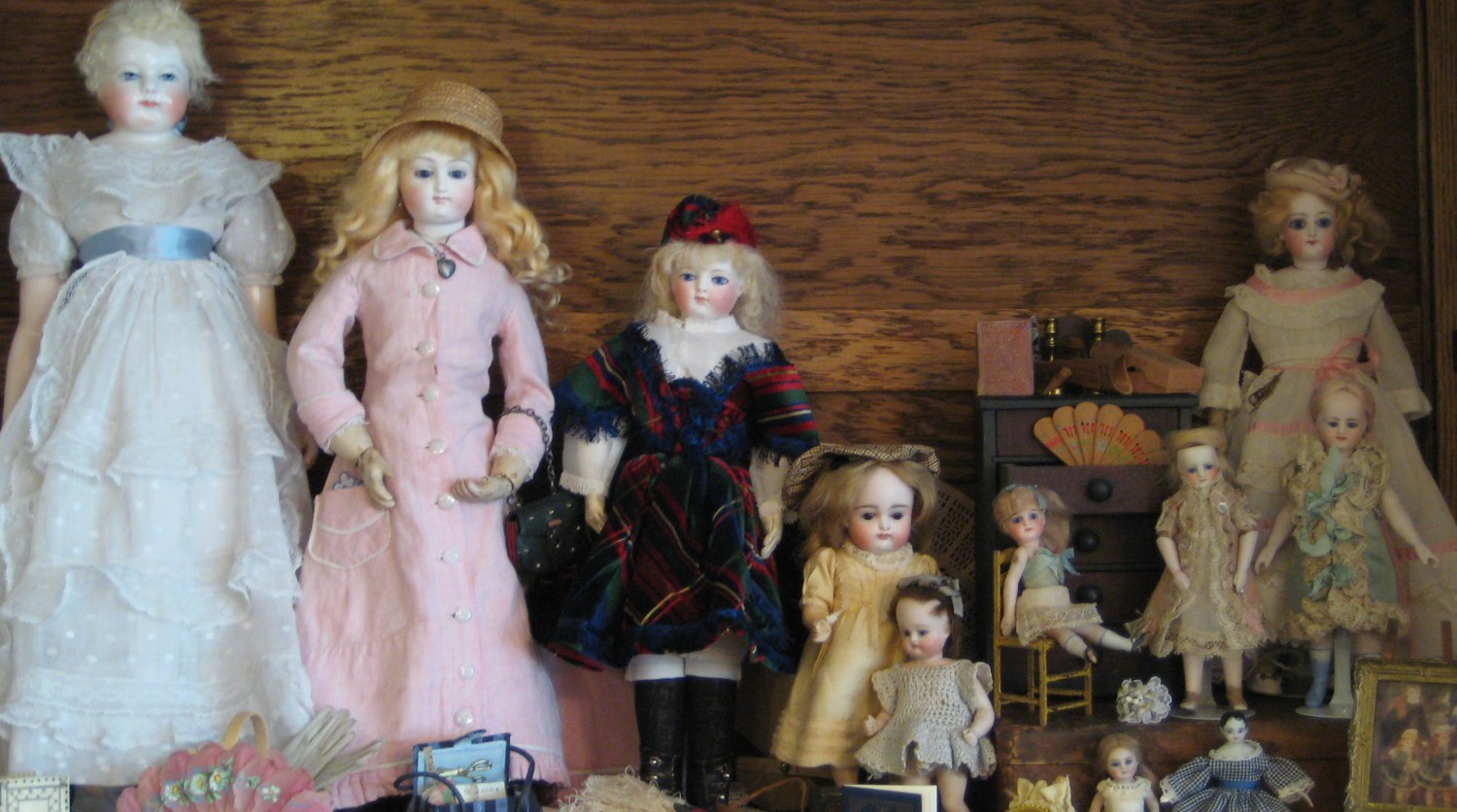Last January, when I started on my journey into 17th century embroidery, a dear friend asked me what it had to do with my other passion, doll collecting and costuming. It was a good question because she challenged me to find a connection.

This A. Marque doll in Theriault’s January, 2015 “Cotillion” auction pretty much sums it up.
Up until recently, the A. Marque dolls held the record as the most expensive dolls ever sold. It is believed that no more than 100 dolls were ever made. The head was sculpted by a renowned artist (Albert Marque). And they were expertly dressed in historic costumes by the couture house of Jeanne Margaine-LaCroix in 1915.

This doll’s beautiful costume was inspired by 17th century embroidery, with a 19th century twist, but made in the 20th century. It is embroidered in silk and metallic threads on a silk satin ground.

There is a mark on the doll’s foot which gives a clue to the origin of her costume, “lorraine”. since the embroidery looks like early 17th century embroidery to me, I did a bit more research.

Here is an example of an early 17th century jacket (or waistcoat). The embroidery is done in a rinceau (French for foliage) pattern of swirling vines, just like the doll’s dress.

Margherita Gonzaga, Duchess of Lorraine (1605), Franz Pourbus, Metropolitan Museum of Art, NY 25.110.21
I came across this portrait on Portrait Timeline that I think may have been the inspiration for the doll’s dress. Notice the pattern on the sleeves of her of her jacket.


As my long-time readers know, I am slowly working on a 17th century fairy masque costume for my wood-body Bru poupee. If I ever make it beyond the embroidery on her smock, she will eventually wear a similar jacket.
So, the dress was made in the early 20th century, inspired by the 17th century. But what about the 19th century twist?

It’s bugs. Beetles to be exact. Iridescent beetle wings were used in Eastern embroidery for centuries. And in the 19th century, Europeans became fascinated with everything Oriental. So beetle wing embroidery became popular.

On her blog, needlenthread.com, Mary Corbett has written about beetle wings numerous times. So if you want to learn more, search “beetle wings” on her site.

In 2011, the British National Trust spent £50,000 to restore 19th-century actress, Ellen Terry’s beetle-wing Lady MacBeth costume. You can read more about it in the Daily Mail’s article here.

This morning, I spoke with Florence Theriault to find out if the greyish, beetle-wing shaped embroidery on the A. Marque’s dress were actually beetle wings or just looked like it. She kindly examined the dress for me and told me that the wing-like shapes were actually stitched with silver thread. Because of their shape, and the use of the silver thread, I believe they were made to look like beetle wings.

If you were wondering about all the dark “dots” on the dress, they are tarnished silver sequins, used to look like the spangles used in 17th century embroidery, although they were sewn on differently.
Florence generously invited me to come to their office before the auction to examine the costume more closely. I may just take her up on the offer.
I am officially a costuming nerd. This post proves it.


Well my Dear, I am thoroughly enjoying your being a costuming Nerd! I guess I’ll join your club. Fantastic blog!
Thanks Caty, you made me smile.
Pingback: Getting Back To It - My Doll's Trousseau